Span 38.5 cm / 15 in
Weight 20 g / 0.7 oz
The original aircraft ranges among the best known planes of the post World War II era although only 360 were built. Its main operators have been the air forces of the United States of America, the Philippines, Indonesia, Thailand, Venezuela, Colombia and Morocco. The OV-10 previously named NA-300 was the winner in a competition for a light armed reconnaissance aircraft among eleven different proposals and had its maiden flight in 1965. The twinseat Bronco has a wingspan of 12.19 m / 40 ft and a length of 13.41 m / 44 ft. Gross weight is 4,494 kg / 9,908 lb. Powerplant consists of two Garrett turboprop engines 1,040 shp each. Machine guns, cannons, rockets, missiles and bombs could be installed or carried.
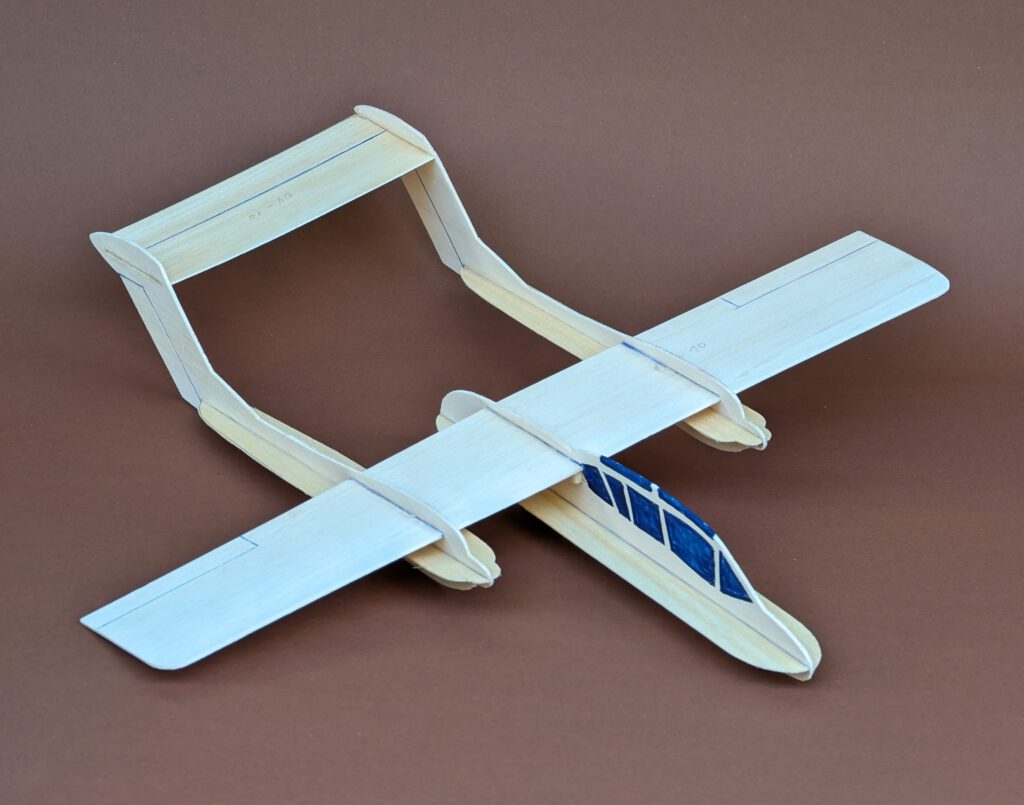
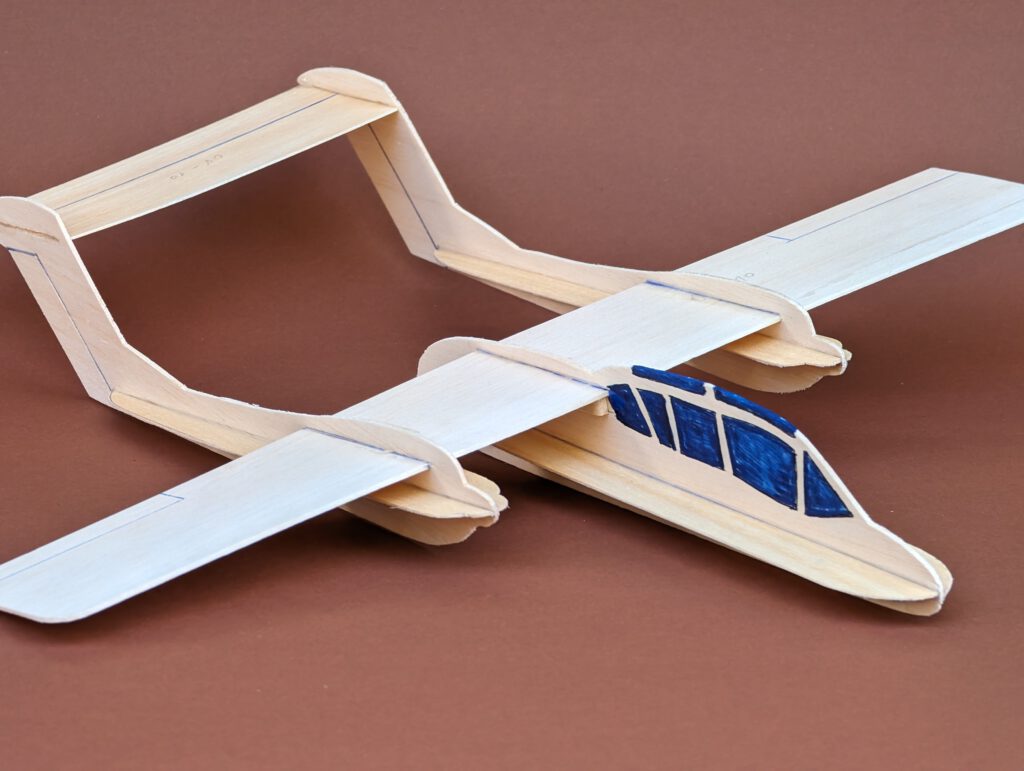
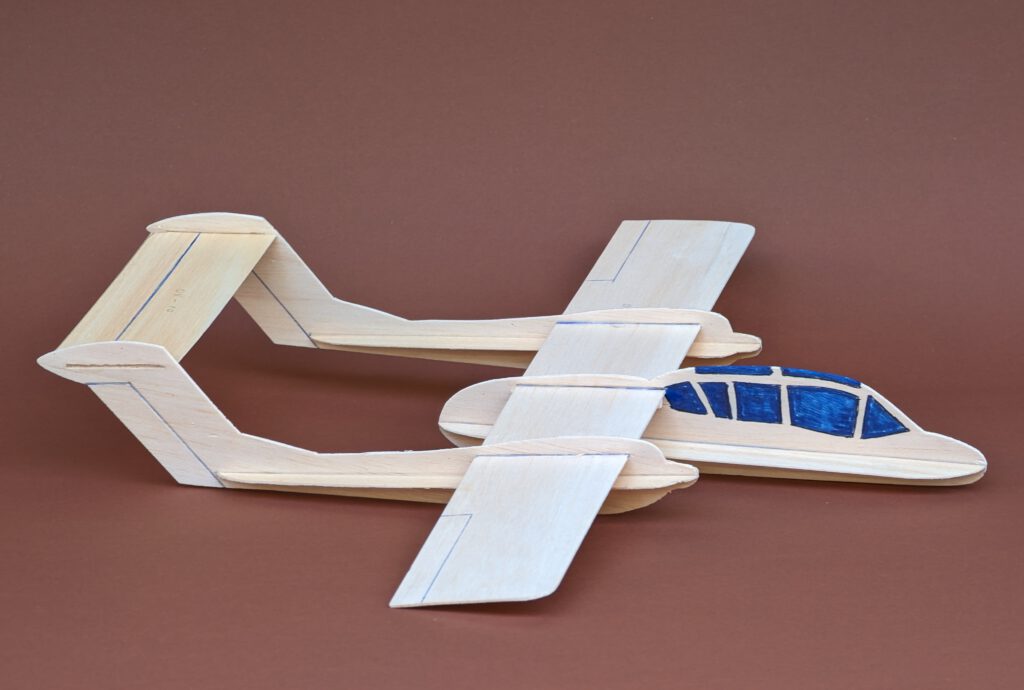
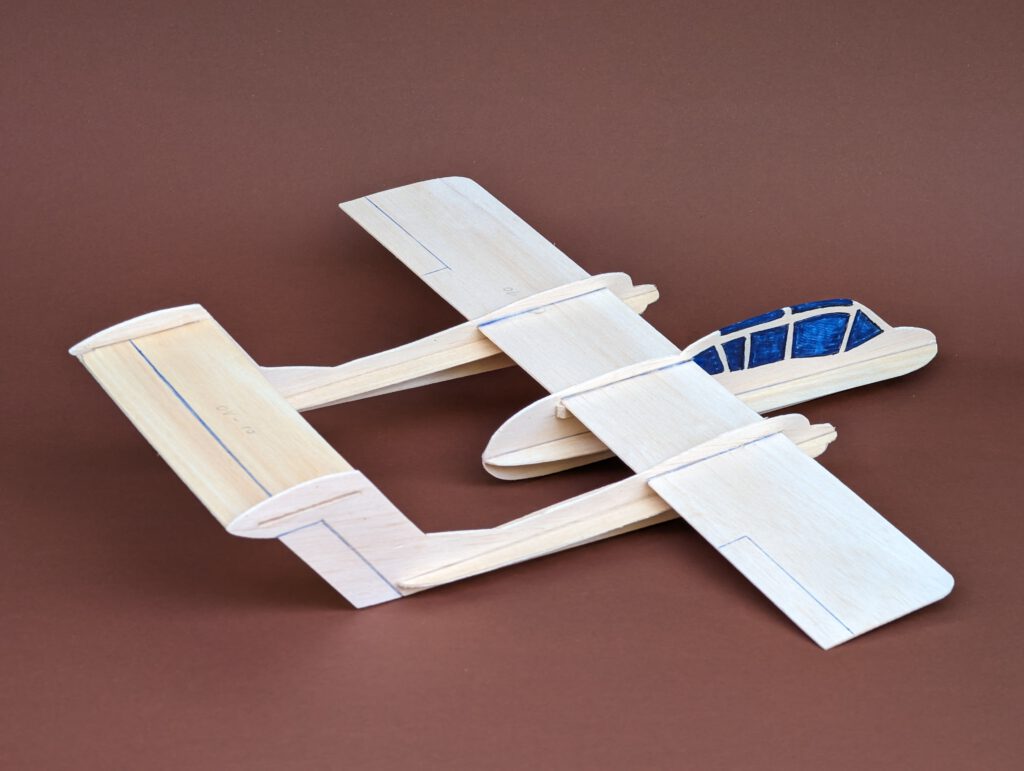
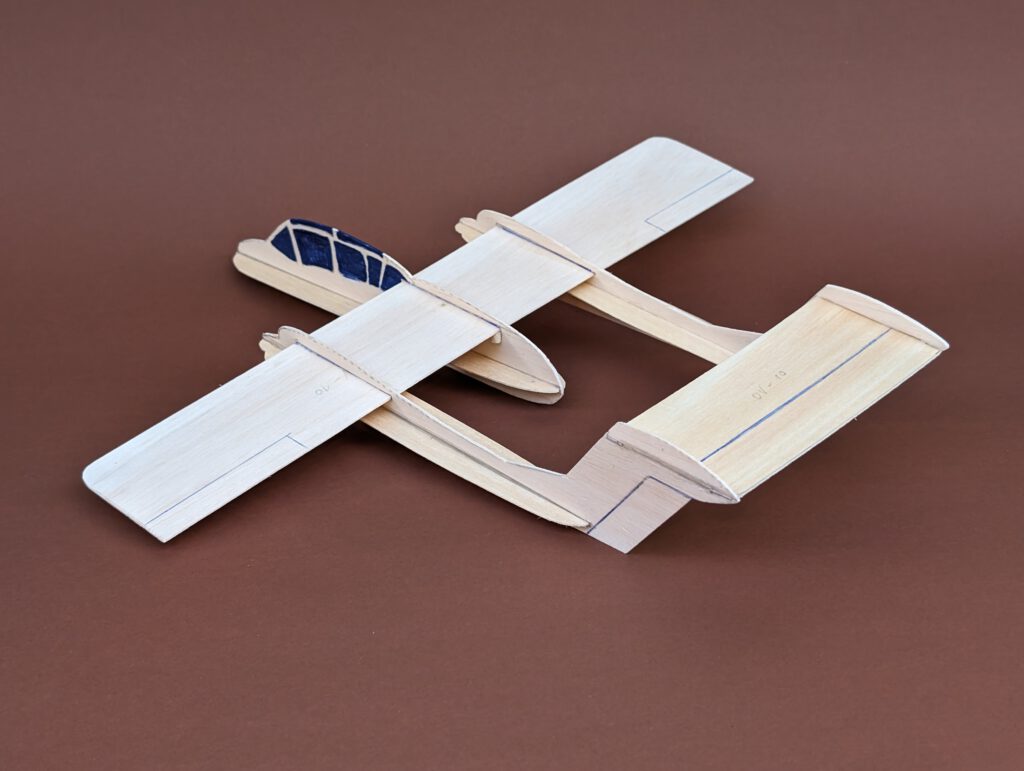
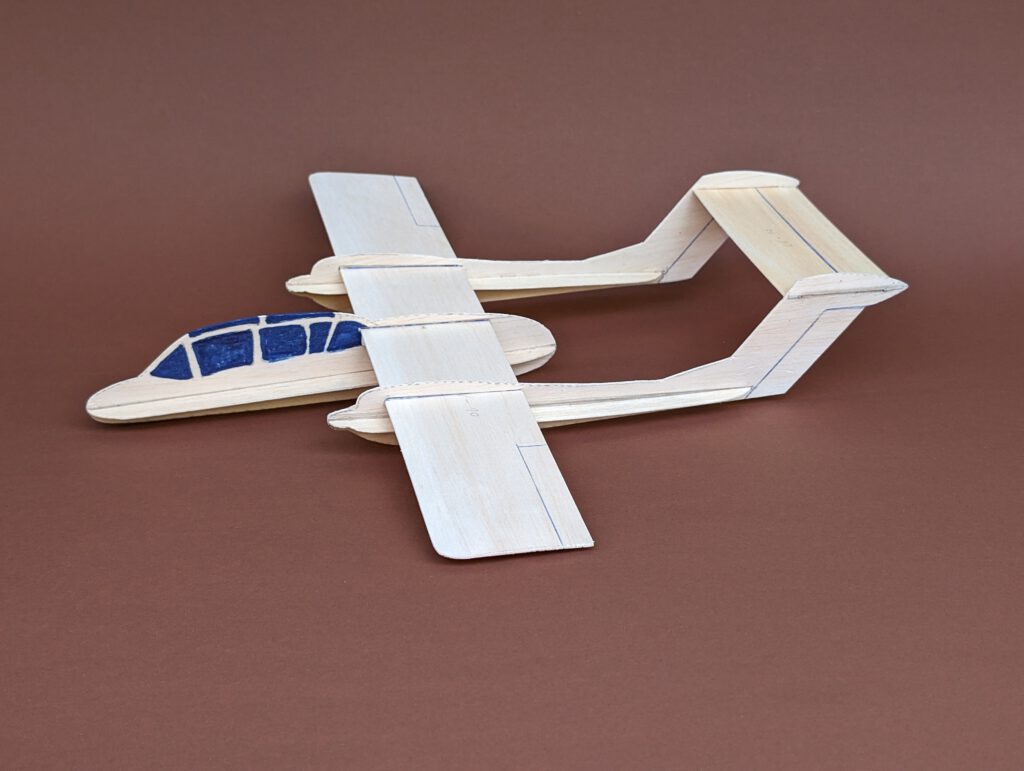

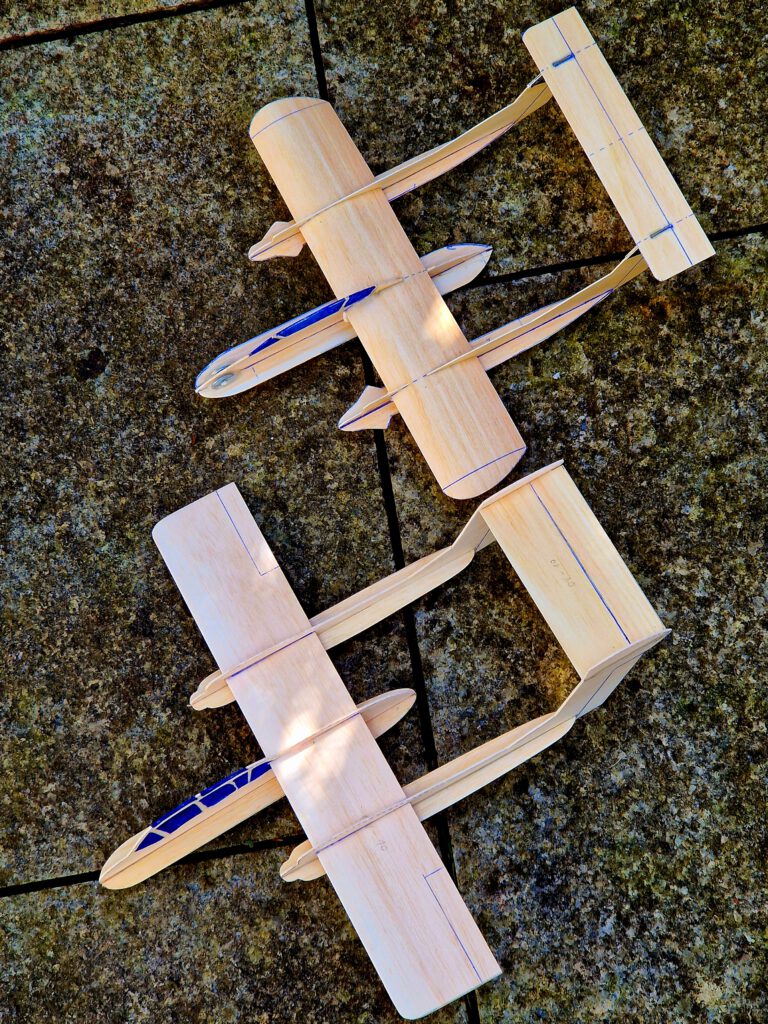
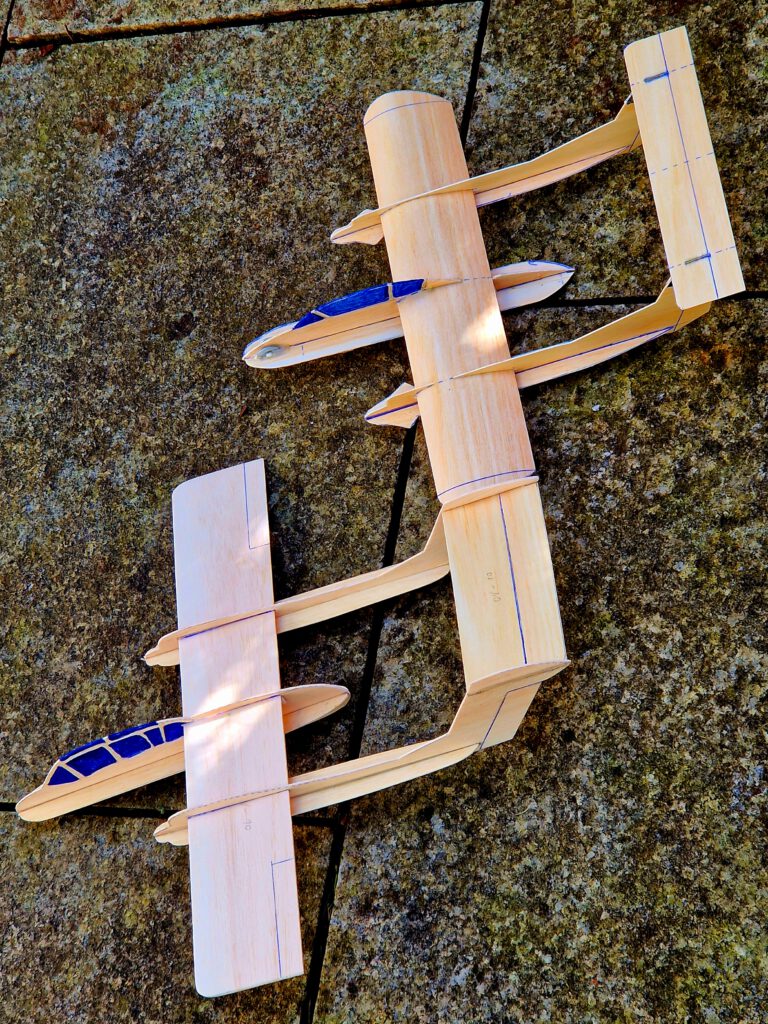
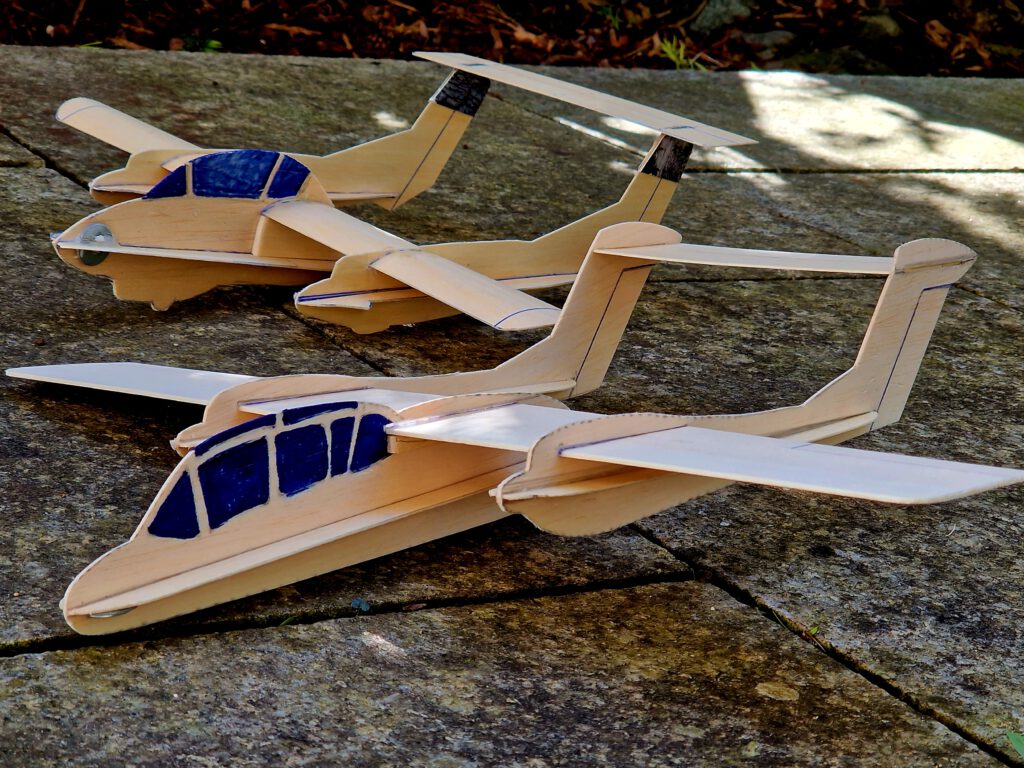
My plan of the OV-10 Bronco was published in 2024 by OUTERZONE VINTAGE & OLD-TIMER PLANS. See https://outerzone.co.uk/plan_details.asp?ID=15283
Building the balsa sheet chuck glider North American Rockwell OV-10 Bronco.
Materials:
Fuselage gondola: B 1.5; Fuselage gondola side stiffener: B 0.8 or B 1; booms: B 1.5; boom stiffeners: B 0.8; wing supports (optional): B strips 2 x 5 or 3 x 3; wings: B 1 or 1.5; horizontal stabilizer: B 0.8; Ballast: small piece of lead or scrap metal.
Assembly:
Cut out all balsa parts. Make slots for wing, stiffeners and horizontal stabilizer (photo). Sand well. Transfer outlines of rudders, elevators flaps ec from paper to wood with pen.
Fuselage:
Fix fuselage gondola on your building board with needles. Cement side stiffener at 90 ° angle on left side of fuselage gondola (photo). Let dry. Repeat procedure on right side (photo). Let dry. Cement wing support strips (photo) in to their place on both sides of fuselage gondola using clamps or clothespins.
Booms:
Cement boom sides stiffeners at 90 ° angle on one side of each boom (photo). Let dry. Repeat procedures on the other side (photo). Put aside.
Wings:
Mark positions of fuselage gondola and booms on wing with pencil. Now cement wing into fuselage gondola slot using needles (photo) and let dry.
Booms:
Cement first one boom on wing (photo), remember to check and measure regularly as obtaining symmetry should be your first and only aim at this step. Now repeat procedure with second boom. Use so called „third hand“ to facilitate building process (see photo).
Empennage:
Cement horizontal stabilizer into boom slots (photo) and let thoroughly dry.
Final Assembly:
Balance model in accordance to given CG on plan.
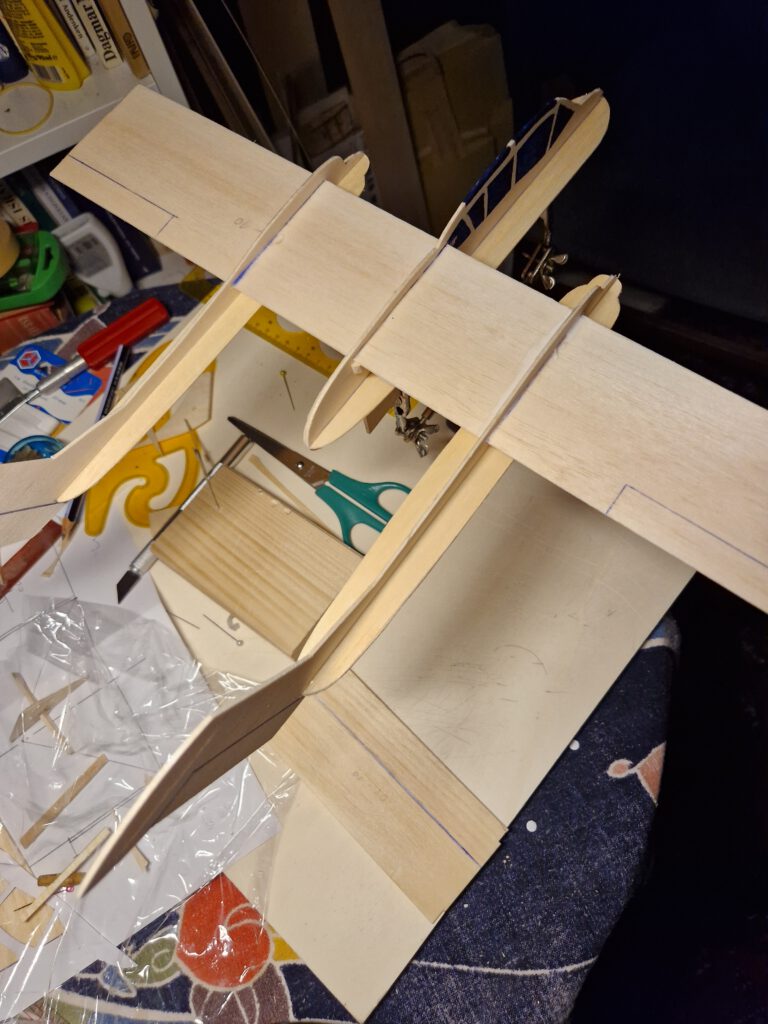
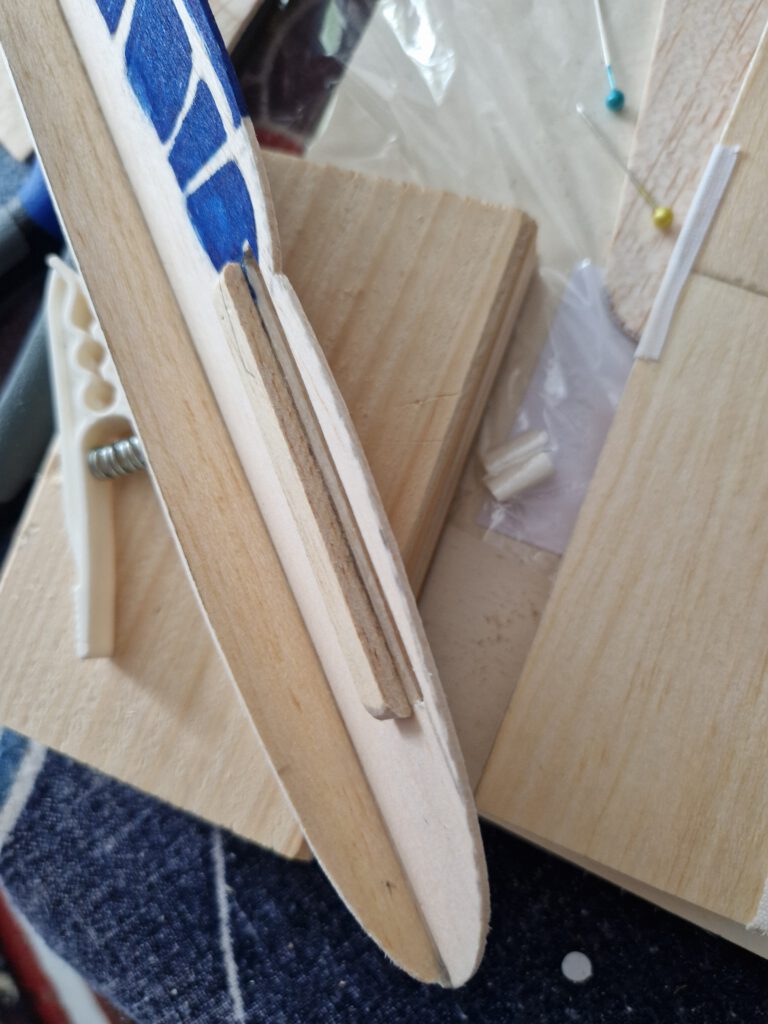
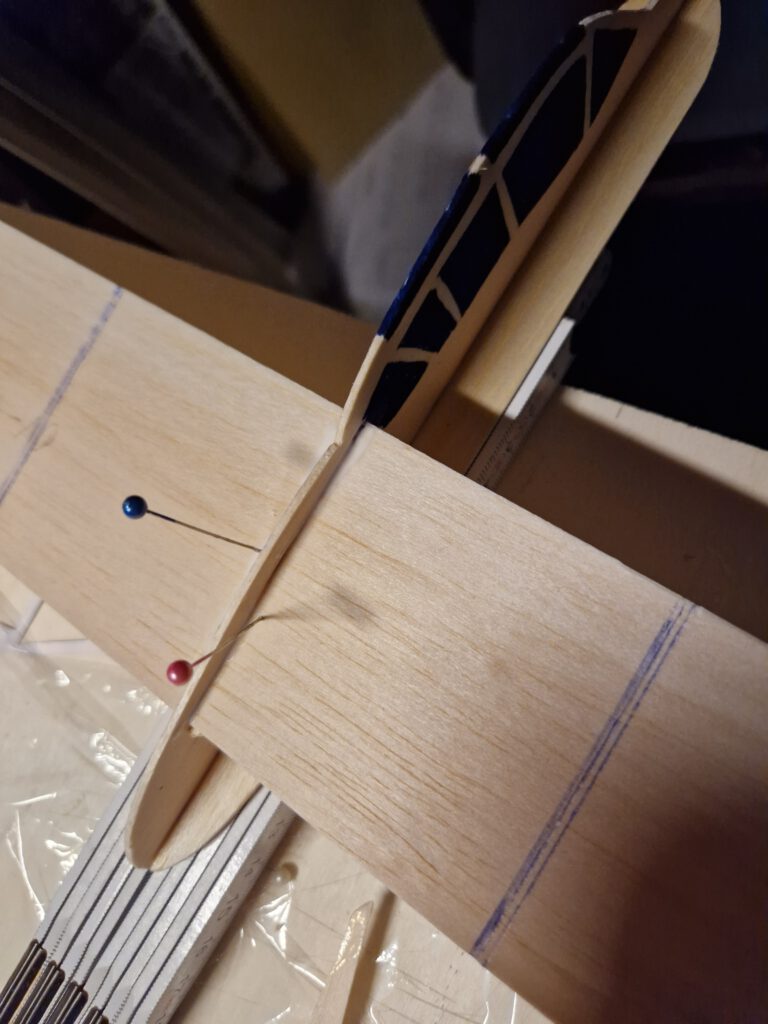
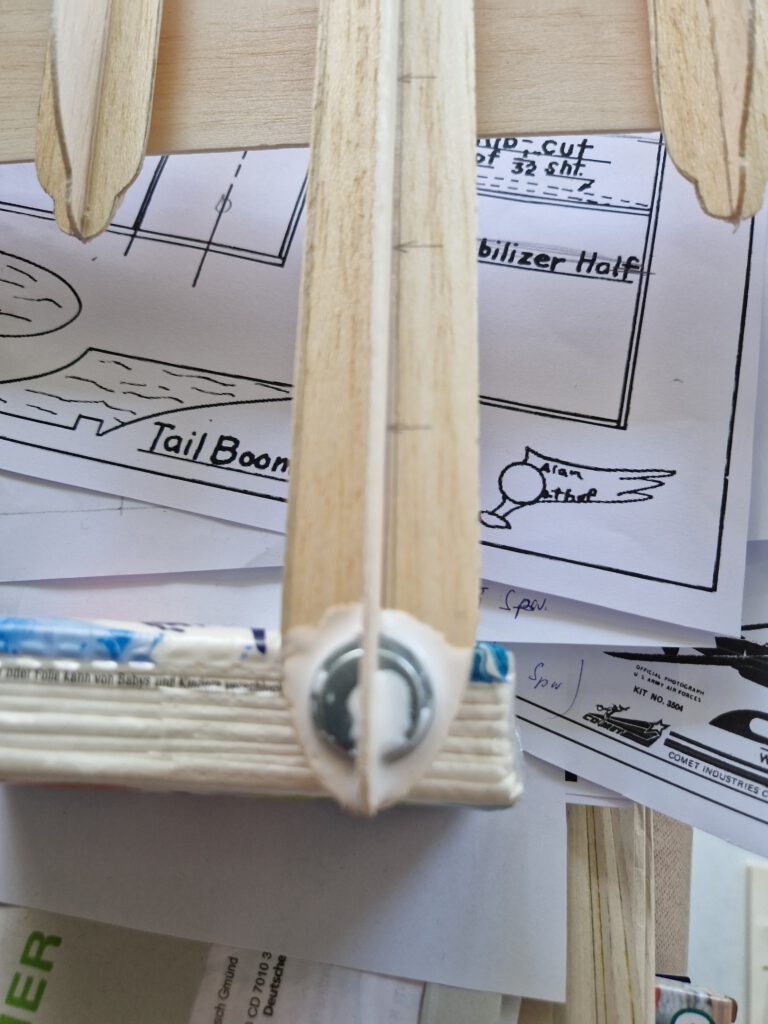
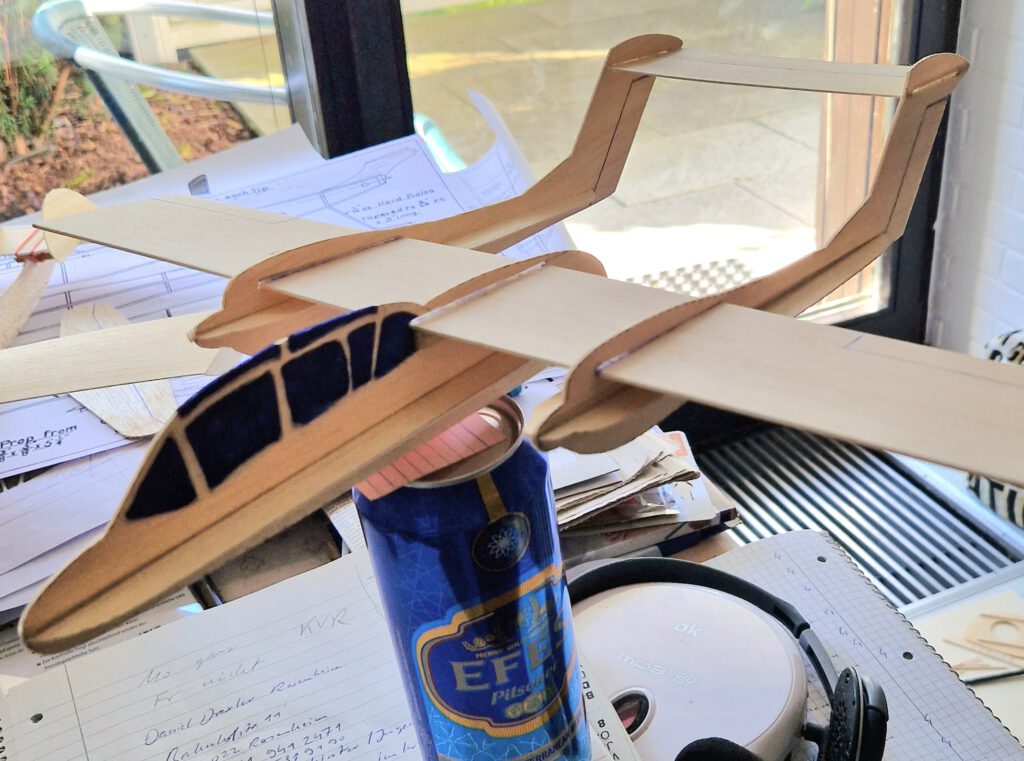
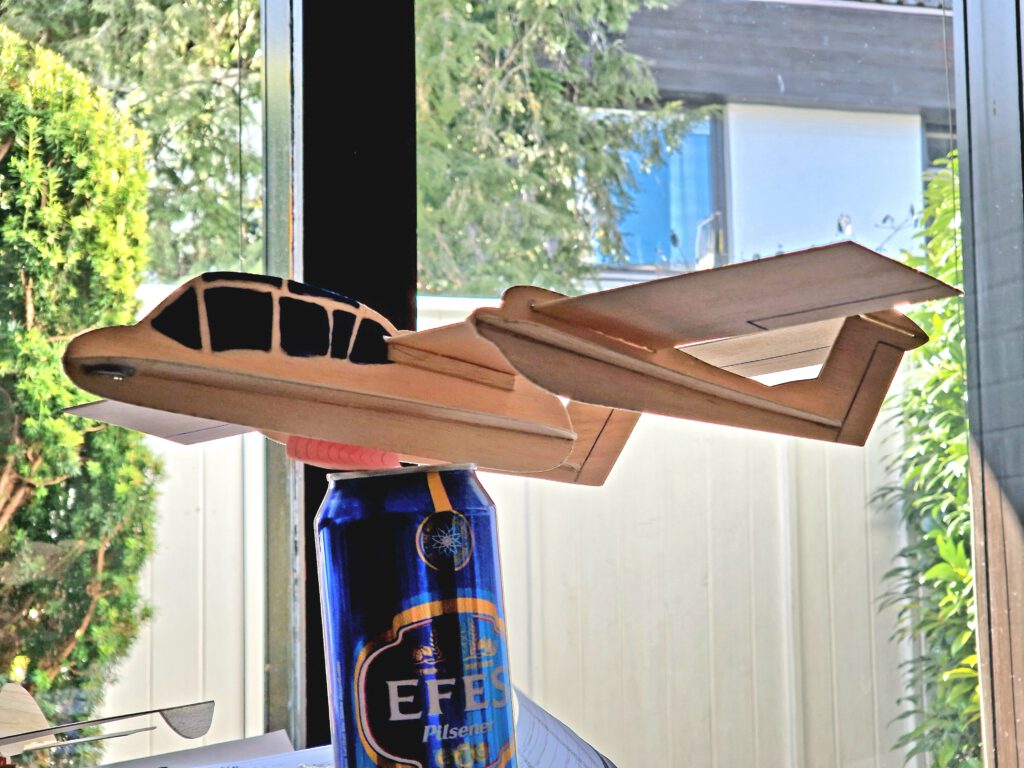
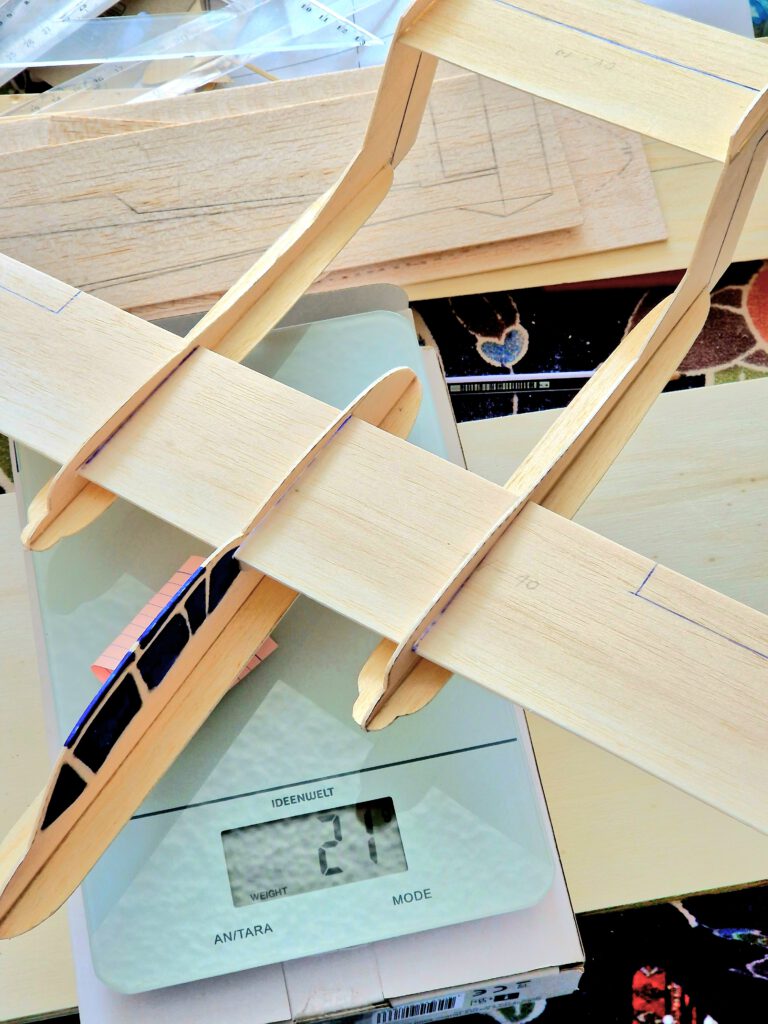
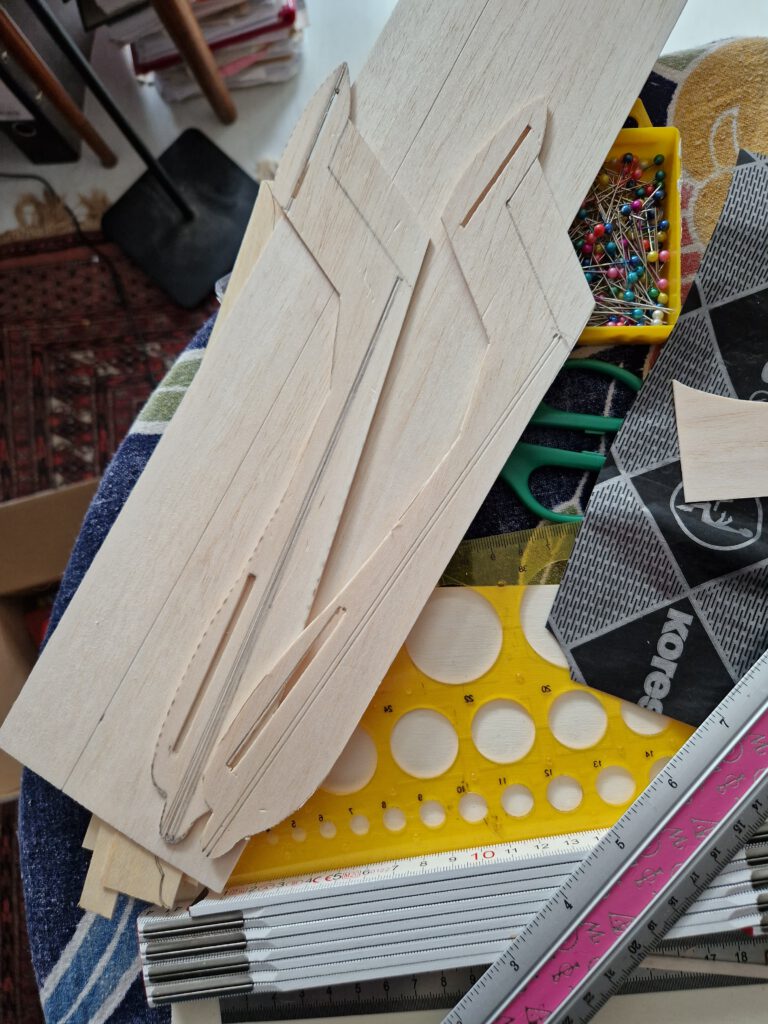
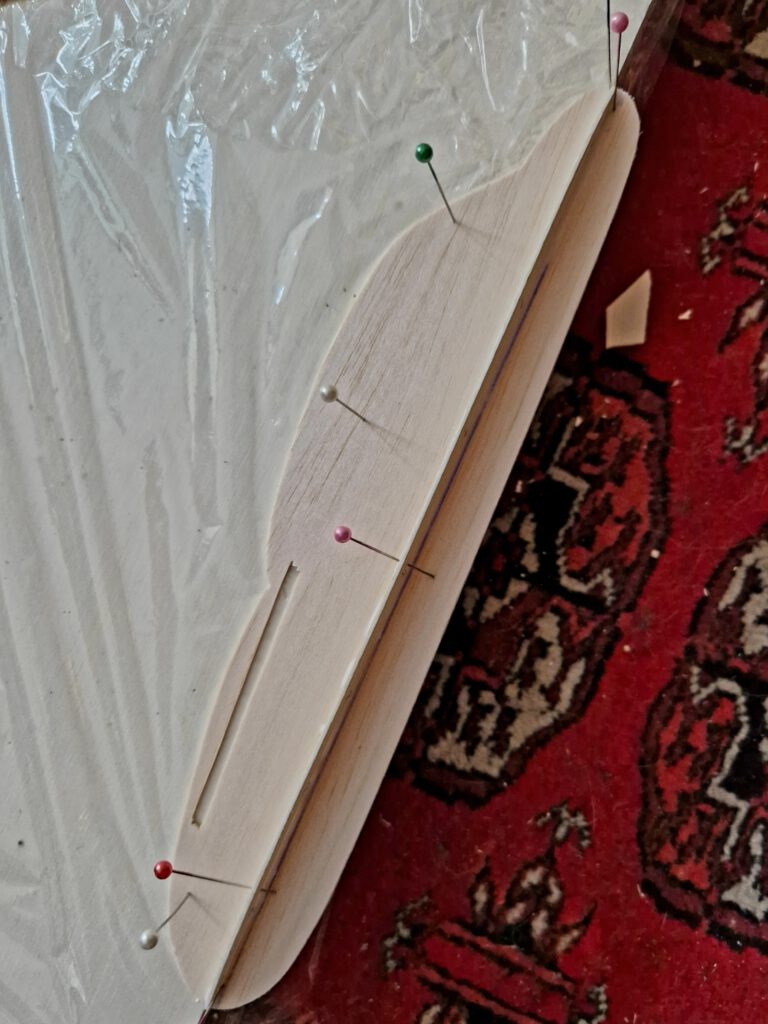
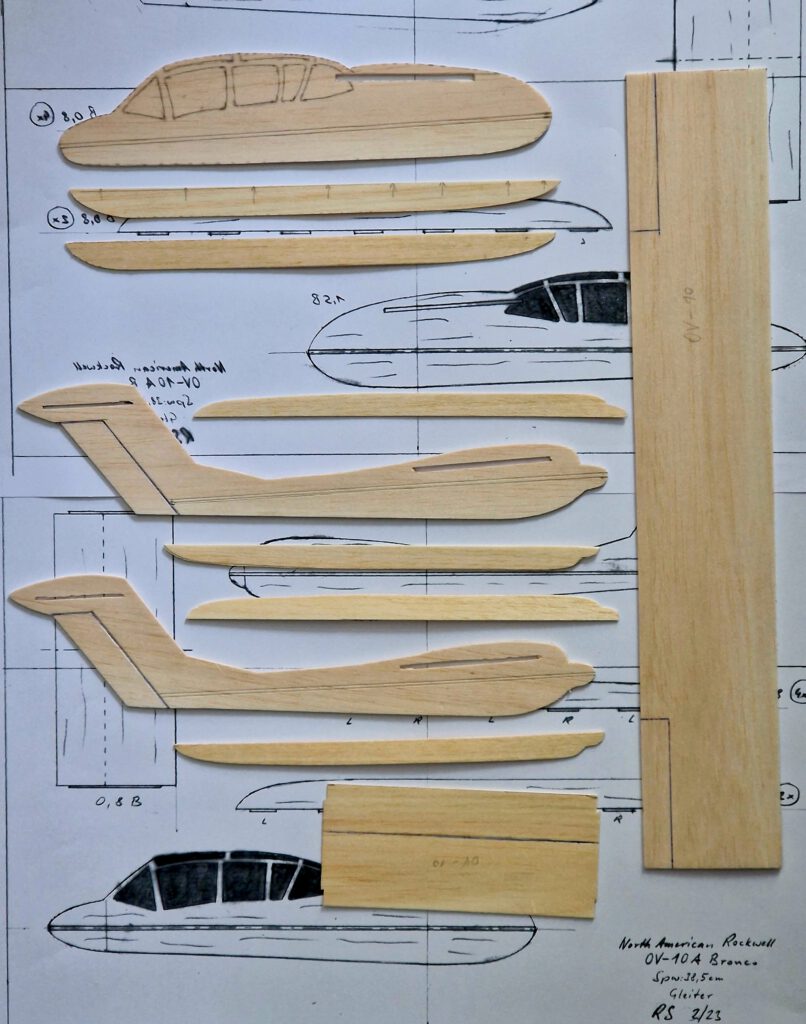
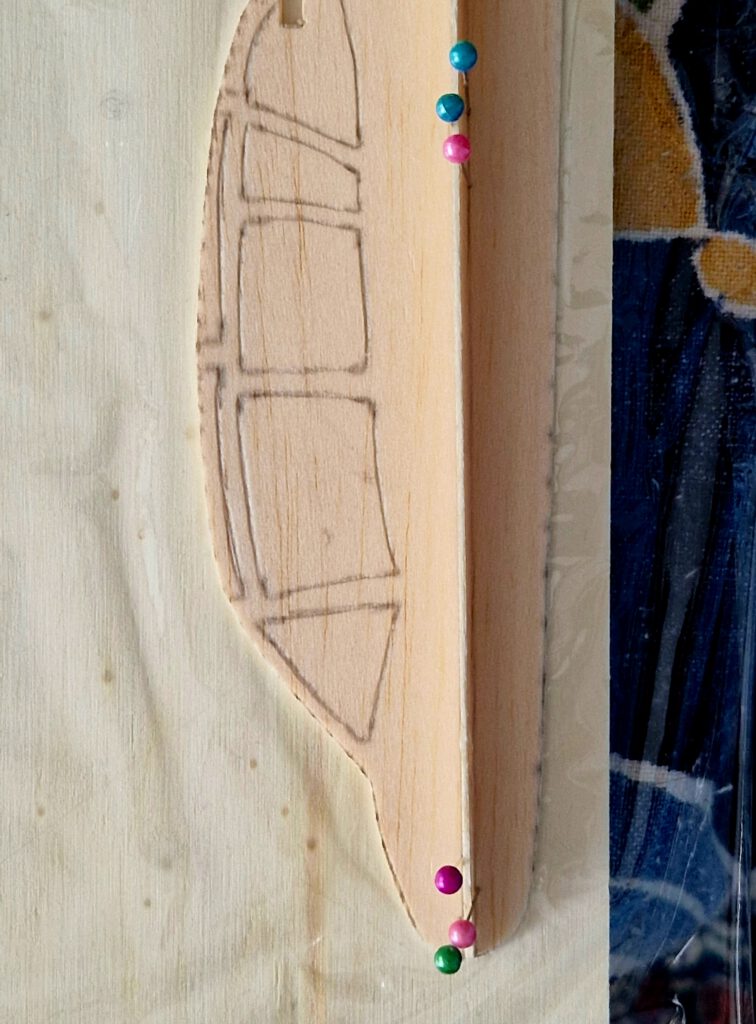
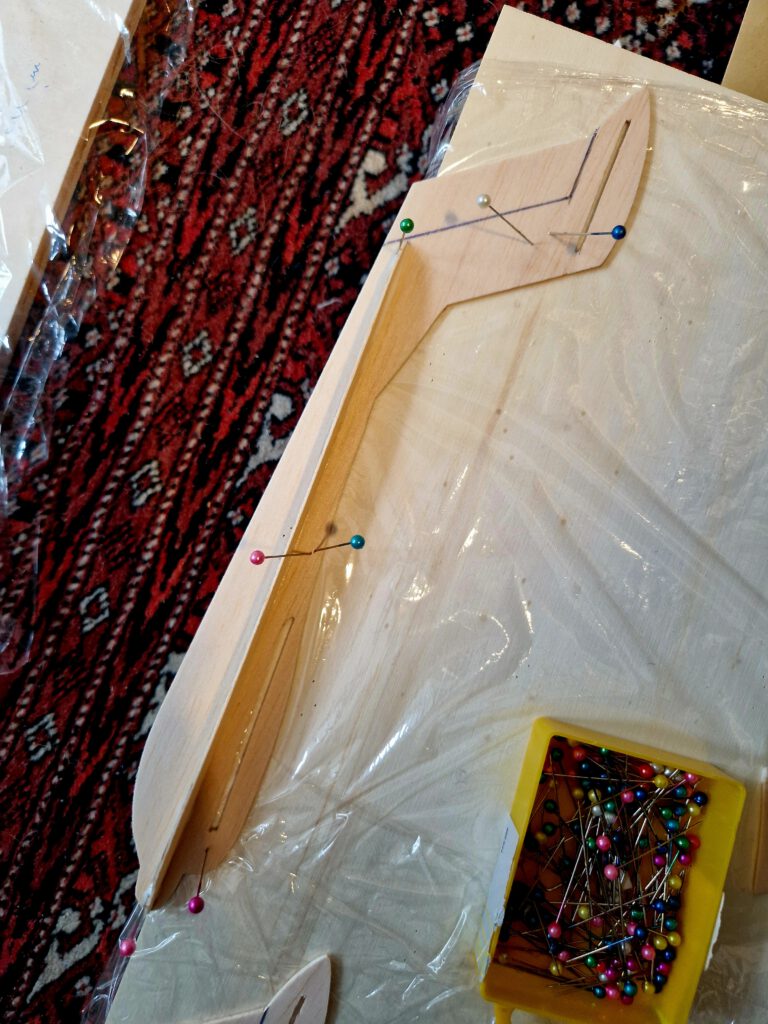
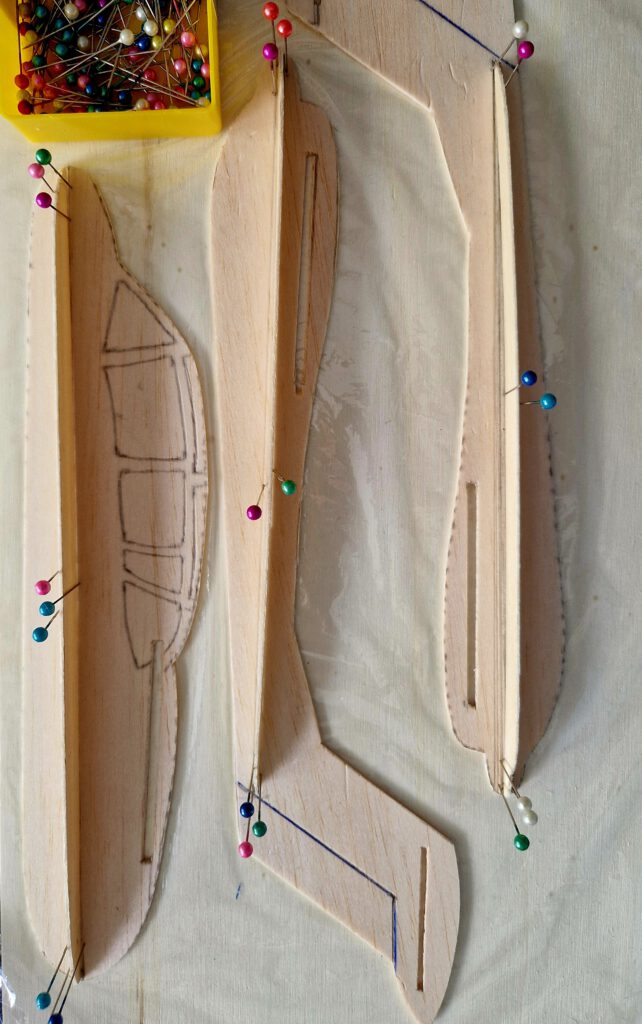
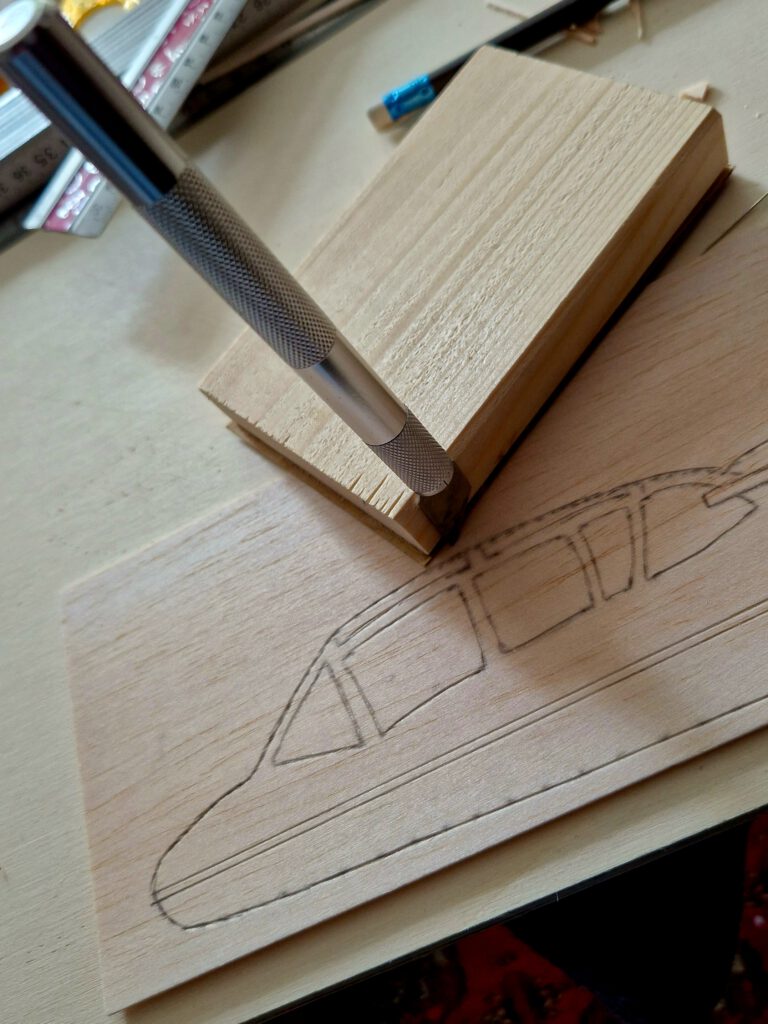
Faites des vols agréables! (iyi uçuşlar!)
Note:
Within the range of my plans you will find as well one of the OV-10 Bronco‘s main rivals in the above mentioned competition – the Convair model 48 Charger. Both models are comparable in size but have totally different wing layouts and thus different flying patterns (photos). Best build both models to find out which flies better!

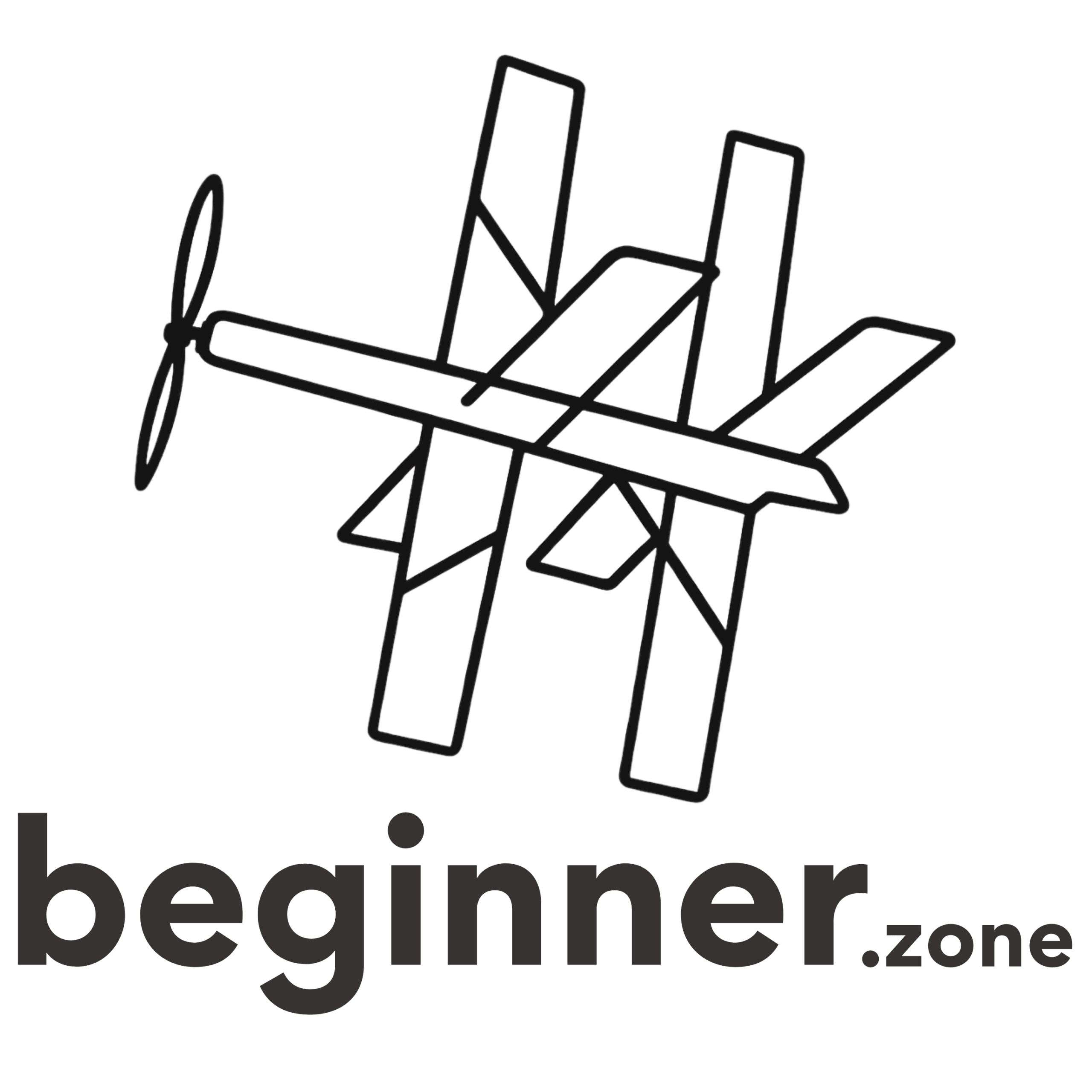
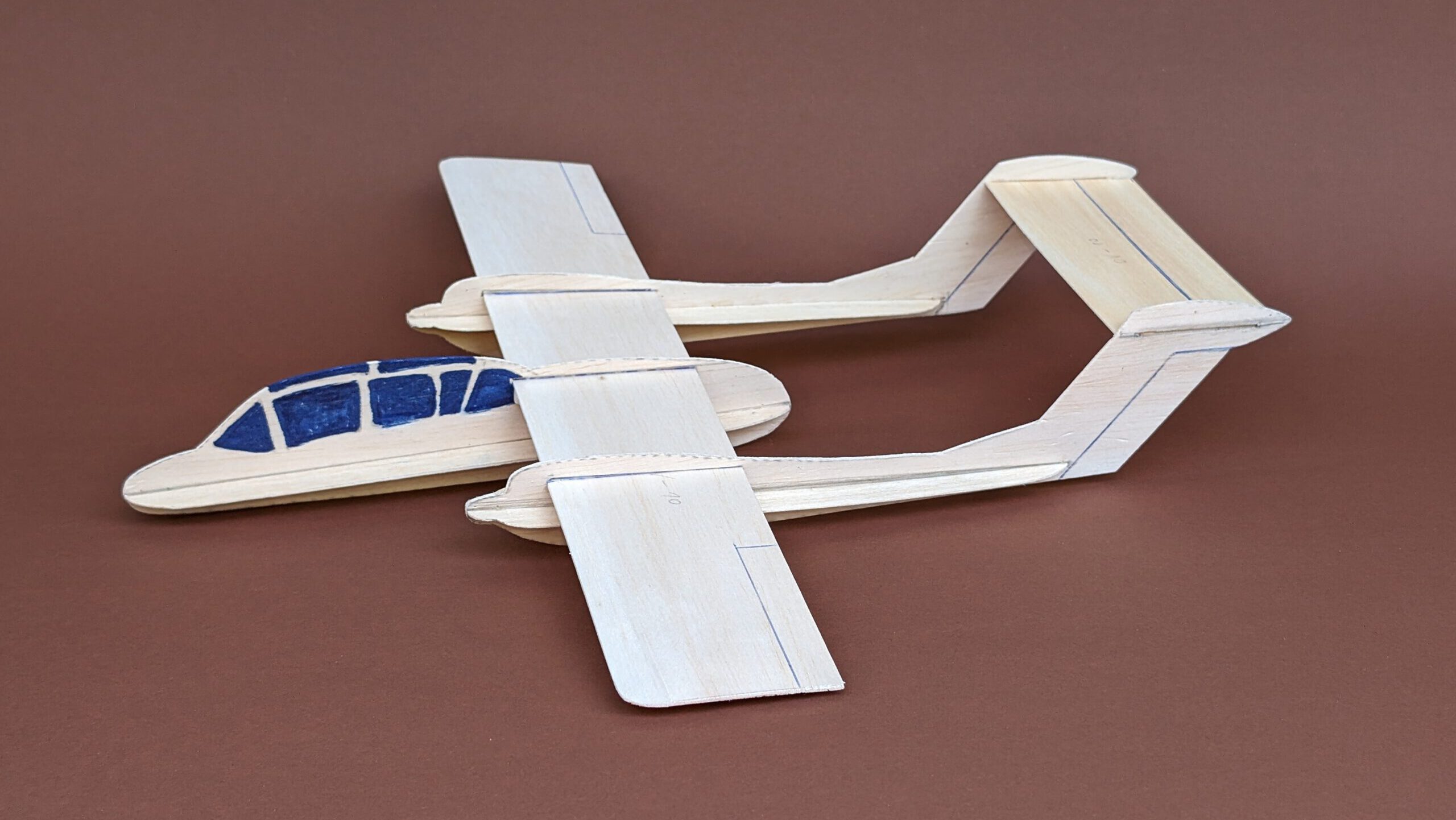
Leave a Reply